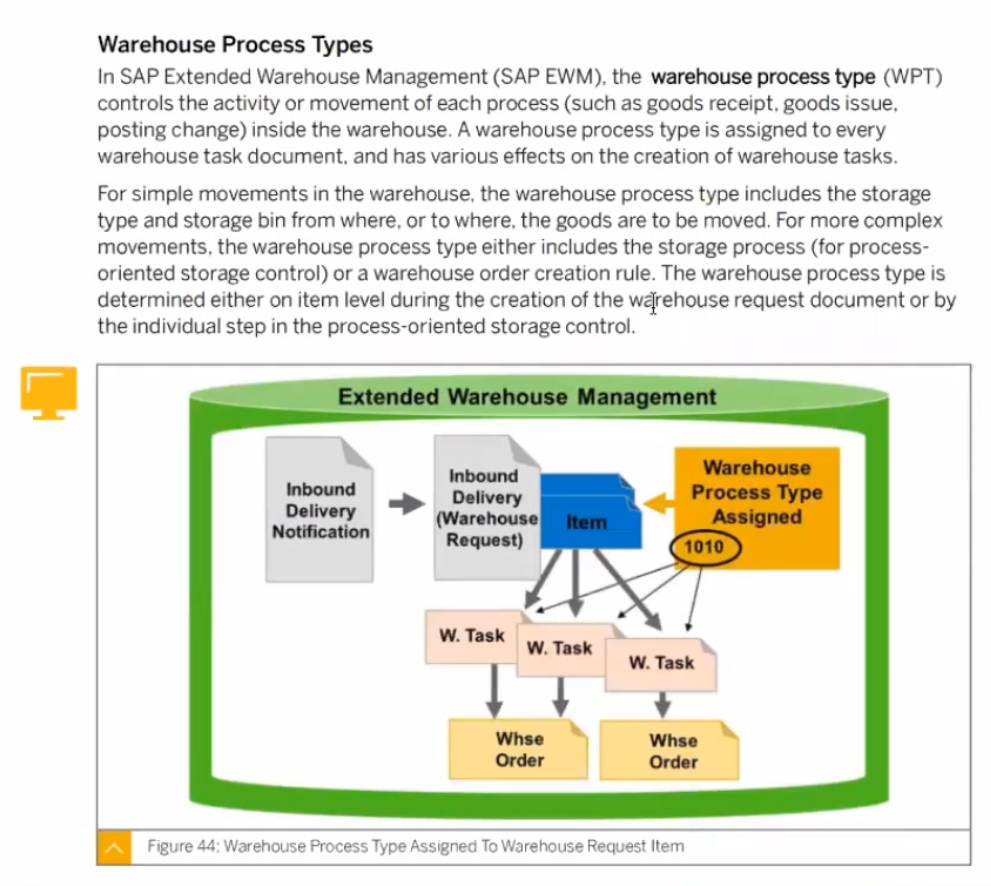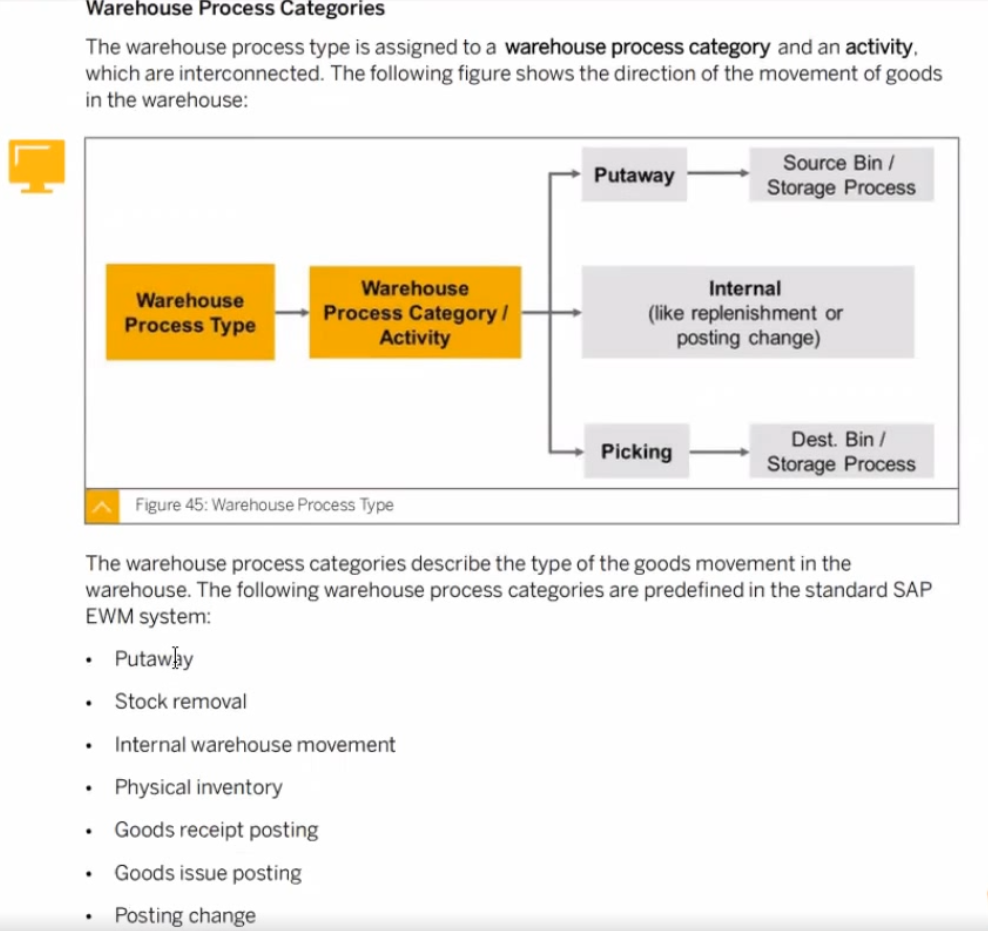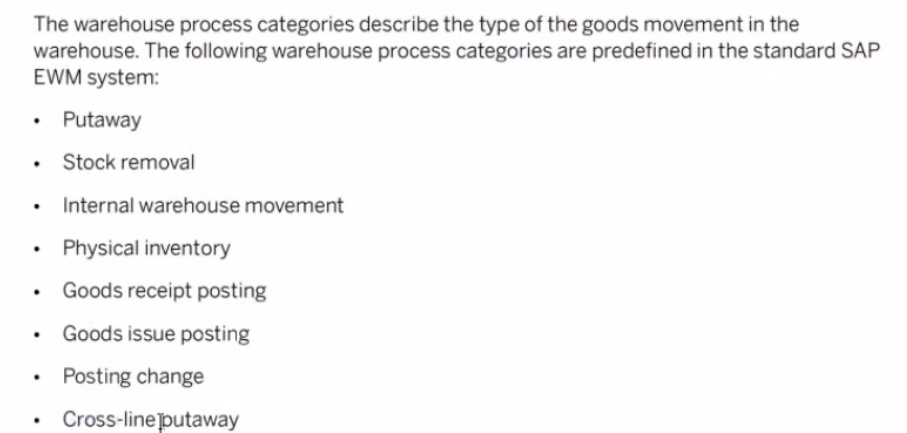SAP EWM初阶之Warehouse Process Type
原创SAP EWM初阶之Warehouse Process Type
原创
SAP EWM初阶之Warehouse Process Type



In SAP Extended Warehouse Management (EWM), Warehouse Process Types (WPTs) define the specific processes for handling goods within a warehouse. These processes include inbound, outbound, and internal movements, ensuring that tasks such as putaway, picking, or stock transfers are executed efficiently.
Key Components of Warehouse Process Types
Warehouse Process Types are determined based on several factors:
- Warehouse Number: Identifies the physical warehouse where goods are processed.
- Document Type and Item Type: Specifies whether the task is for inbound delivery, stock transfer, or outbound order.
- Process Type Determination Indicator (PTDI): A setting in the Product Master that drives WPT determination.
- Delivery Priority: Helps prioritize urgent shipments and influences system behavior.
For example, when an inbound delivery is created, the system assigns a WPT (e.g., 1010 for putaway), which defines the source storage type, storage bin, and goods movement bin.
决定WPT的因素
Warehouse number + Document type + ltem type + Delivery priority + Control indicator = Warehouse Process Type
Configuration and Attributes
Warehouse Process Types are configured in SAP EWM under the path: SCM Extended Warehouse Management > Cross-Process Settings > Warehouse Task > Define Warehouse Process Type.
Key attributes include:
- Warehouse Process Category: Defines the nature of the movement (e.g., putaway, stock removal, internal movement).
- Activity: Specifies the type of product movement, such as repacking or bin-to-bin transfer.
- Manual WT Forbidden: Ensures tasks are created automatically, avoiding manual intervention.
- Priority: Assigns task execution priority.
- Putaway/Stock Removal Controls: Determines source and destination storage types and bins for tasks.
Synchronization with Putaway Strategies
Once the WPT is determined, the system uses Putaway Strategies to decide where to store the product. Key elements include:
- Putaway Control Indicator (PACI): Dictates storage preferences.
- Storage Type Search Sequence (STSS): Searches for available storage areas in a predefined order.
- Synchronization: Ensures seamless integration between WPT and putaway strategies to optimize storage and retrieval.
Practical Example
For an inbound process:
Create a purchase order and inbound delivery.
Distribute the delivery to EWM.
The system assigns a WPT (e.g., 1010), triggering tasks for goods receipt and putaway.
Products are moved to designated storage bins based on STSS and PACI settings.
注:这是笔者在观看SAP EWM培训视频时所做的笔记。培训视频中的展示的SAP EWM是SAP S4HANA里面嵌入式的EWM系统。
写于2025-9-9
原创声明:本文系作者授权腾讯云开发者社区发表,未经许可,不得转载。
如有侵权,请联系 cloudcommunity@tencent.com 删除。
原创声明:本文系作者授权腾讯云开发者社区发表,未经许可,不得转载。
如有侵权,请联系 cloudcommunity@tencent.com 删除。

